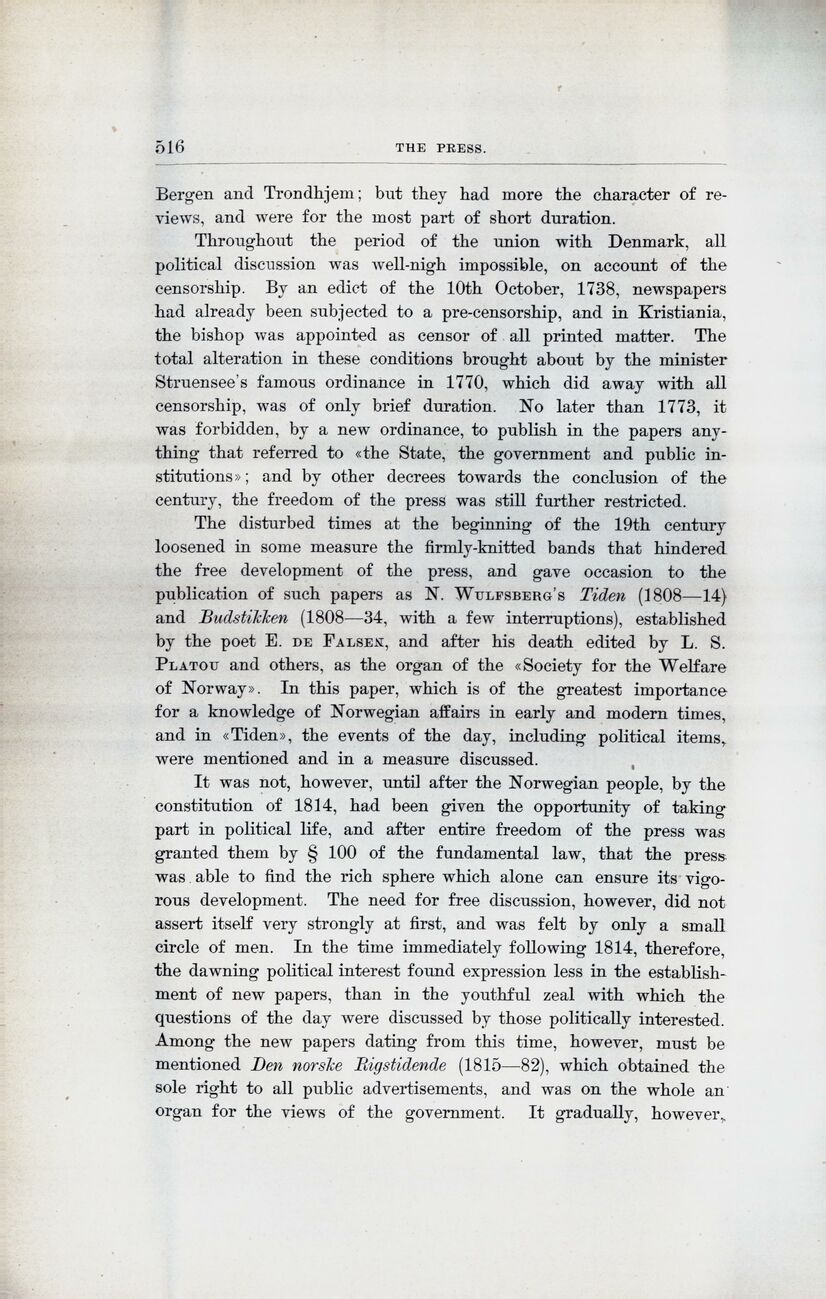
Full resolution (JPEG) - On this page / på denna sida - Press, by Karl Fischer

<< prev. page << föreg. sida << >> nästa sida >> next page >>
Below is the raw OCR text
from the above scanned image.
Do you see an error? Proofread the page now!
Här nedan syns maskintolkade texten från faksimilbilden ovan.
Ser du något fel? Korrekturläs sidan nu!
This page has been proofread at least once.
(diff)
(history)
Denna sida har korrekturlästs minst en gång.
(skillnad)
(historik)
Bergen and Trondhjem; but they had more the character of
reviews, and were for the most part of short duration.
Throughout the period of the union with Denmark, all
political discussion was well-nigh impossible, on account of the
censorship. By an edict of the 10th October, 1738. newspapers
had already been subjected to a pre-censorship, and in Kristiania,
the bishop was appointed as censor of all printed matter. The
total alteration in these conditions brought about by the minister
Struensee’s famous ordinance in 1770, which did away with all
censorship, was of only brief duration. No later than 1773, it
was forbidden, by a new ordinance, to publish in the papers
anything that referred to «the State, the government and public
institutions»; and by other decrees towards the conclusion of the
century, the freedom of the press was still further restricted.
The disturbed times at the beginning of the 19th century
loosened in some measure the firmly-knitted bands that hindered
the free development of the press, and gave occasion to the
publication of such papers as N. Wulfsberg’s Tiden (1808—14)
and Budstikken (1808—34, with a few interruptions), established
by the poet E. de Falsen, and after his death edited by L. S.
Platou and others, as the organ of the «Society for the Welfare
of Norway». In this paper, which is of the greatest importance
for a knowledge of Norwegian affairs in early and modern times,
and in «Tiden», the events of the day, including political items,
were mentioned and in a measure discussed.
It was not, however, until after the Norwegian people, by the
constitution of 1814, had been given the opportunity of taking
part in political life, and after entire freedom of the press was
granted them by § 100 of the fundamental law, that the press
was able to find the rich sphere which alone can ensure its
vigorous development. The need for free discussion, however, did not
assert itself very strongly at first, and was felt by only a small
circle of men. In the time immediately following 1814, therefore,
the dawning political interest found expression less in the
establishment of new papers, than in the youthful zeal with which the
questions of the day were discussed by those politically interested.
Among the new papers dating from this time, however, must be
mentioned Den norske Rigstidende (1815—82), which obtained the
sole right to all public advertisements, and was on the whole an
organ for the views of the government. It gradually, however,
<< prev. page << föreg. sida << >> nästa sida >> next page >>